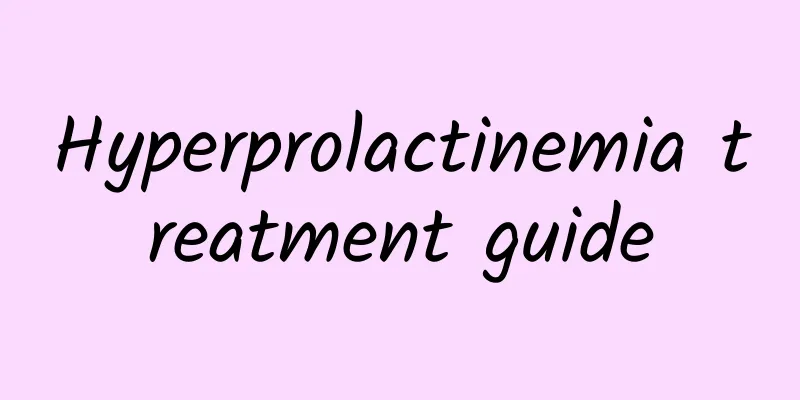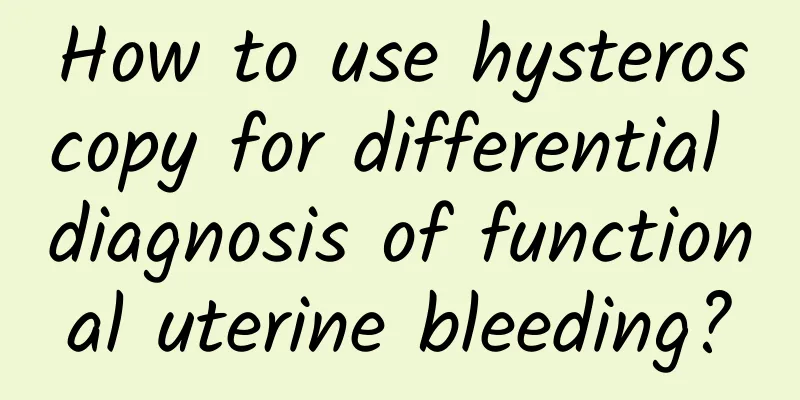How big does a uterine fibroid need to be surgically removed? What is the best way to treat uterine fibroids?

|
Uterine fibroids are also called "fibroids", "uterine fibroids" and "uterine leiomyomas". They are a common benign tumor in the female reproductive organs. In women of childbearing age, as they age, fibroids may gradually increase in size and number, and fibroid removal surgery may also cause recurrence. Although the malignant rate of uterine fibroids is very low, about 0.4-0.8%. However, we still need to be vigilant about the risk of malignant transformation. Among women over 35 years old, about 20% have uterine fibroids, but because the tumor develops slowly and has no clinical symptoms, many people are not discovered throughout their lives and do not need treatment. Most patients are asymptomatic and are only occasionally discovered during pelvic examination or ultrasound examination. Common clinical symptoms include: 1. Uterine bleeding is the main symptom of uterine fibroids. It is mostly cyclical bleeding, which can be manifested as increased menstrual volume, prolonged menstrual period or shortened cycle. It can also be manifested as irregular vaginal bleeding without periodicity. Uterine bleeding is more common in submucosal fibroids and intramural fibroids, while subserosal fibroids rarely cause uterine bleeding. 2. Abdominal masses and compression symptoms: When the fibroids grow to a size larger than a 3-month pregnant uterus or are large subserosal fibroids located at the bottom of the uterus, you can often feel the mass in the abdomen, which is more obvious in the morning when the bladder is full. The mass is solid, movable, and painless. When the fibroids grow to a certain size, they can cause compression symptoms of surrounding organs. Tumor compression of the bladder can cause frequent urination, urgency, difficulty urinating, and even urinary retention. Myomas on the posterior wall of the uterus, especially those on the isthmus or posterior lip of the cervix, compress the rectum, which can cause difficulty in defecation and discomfort after defecation. Giant broad ligament fibroids can compress the ureter and even cause hydronephrosis. 3. Pain: Uterine fibroids generally do not cause obvious pain, but common symptoms include a feeling of heaviness in the lower abdomen and back pain. Acute abdominal pain can only occur when the pedicle of the subserosal fibroids is twisted or the uterine fibroids undergo red degeneration. Patients with fibroids combined with endometriosis or adenomyosis may experience dysmenorrhea. 4. Increased leucorrhea: The enlargement of the uterine cavity, the increase of endometrial glands, and the congestion of the pelvic cavity can increase leucorrhea. When the submucosal fibroids of the uterus or cervix ulcerate, become infected, or necrotic, bloody or purulent leucorrhea will be produced. 5. Infertility and miscarriage: Some patients with uterine fibroids are infertile or prone to miscarriage. The location, size and number of fibroids have a certain impact on conception and pregnancy. Huge uterine fibroids can cause deformation of the uterine cavity, hindering the implantation of the gestational sac and the growth and development of the embryo; fibroids compressing the fallopian tubes can cause obstruction of the lumen; submucosal fibroids can hinder the implantation of the gestational sac or affect the entry of sperm into the uterine cavity. The spontaneous abortion rate of patients with fibroids is higher than that of the normal population, with a ratio of about 4:1. 6. Anemia: Long-term menorrhagia or irregular vaginal bleeding can cause hemorrhagic anemia. Patients with submucosal fibroids may experience more severe anemia. 7. Others: A very small number of patients with uterine fibroids may develop polycythemia and hypoglycemia, which is generally believed to be related to the production of ectopic hormones by the tumor. To date, the cause of uterine fibroids is still unclear, and may involve a more complex interaction between normal myometrial cell mutations, sex hormones and local growth factors. 1. However, according to a large number of clinical observations and experimental results, fibroids are a type of tumor that depends on estrogen for growth. Estrogen is the main factor that promotes the growth of fibroids. 2. Growth hormone is also related to the growth of fibroids. Growth hormone can cooperate with estrogen to promote mitosis and promote the growth of fibroids. 3. Human placental lactogen may also synergize with estrogen to promote mitosis. The accelerated growth of uterine fibroids during pregnancy is related to the high hormone environment during pregnancy. 4. In addition, ovarian function and hormone metabolism are controlled and regulated by higher nerve centers, so the activity of nerve centers may also play an important role in the occurrence of fibroids. 5. Uterine fibroids are more common in women of childbearing age, widowed women, and women with unbalanced sexual lives. Chronic pelvic congestion caused by long-term sexual dysfunction may also be one of the causes of uterine fibroids. In short, the occurrence and development of uterine fibroids may be the result of the combined action of multiple factors. 1. Have regular gynecological examinations for early detection and early treatment. 2. Prevent excessive fatigue, and pay special attention to rest during menstruation. 3. Keep your private parts clean and dry, and wear loose underwear. If there is too much vaginal discharge, you should wash your vulva at any time. 1. Drug treatment (1) Gonadotropin-releasing hormone analogs: leuprorelin (Enanton), goserelin (Zoloft), triptorelin (Dapiga), etc. It is not advisable to use them continuously for a long time to avoid causing severe menopausal symptoms caused by low estrogen; you can also supplement with a small dose of estrogen to counteract this side effect. (2) Mifepristone is a progesterone antagonist that can reduce the size of fibroids, but the fibroids will grow again after stopping the drug. (3) Danazol: used for preoperative medication or treatment of uterine fibroids that are not suitable for surgery. Uterine fibroids may grow larger after drug withdrawal. Danazol can cause liver damage and androgen-induced side effects. (4) Androgen drugs Commonly used drugs include methyltestosterone (methyltestosterone) and testosterone propionate (testosterone propionate), which can inhibit the growth of fibroids. Attention should be paid to the dosage to avoid masculinization. During the bleeding period of uterine fibroids, if the amount of bleeding is heavy, uterine contraction agents (such as oxytocin, ergot) and hemostatic drugs (such as tranexamic acid, aminomethylbenzoic acid (hemostatic aromatic acid), levofloxacin, Panax notoginseng tablets, etc.) can be used. 2. Surgical treatment Surgical treatment of uterine fibroids includes myomectomy and hysterectomy, which can be performed abdominally or vaginally, or endoscopically (hysteroscopy or laparoscopy). (1) Myomectomy: The myoma is removed while the uterus is preserved. It is mainly used for those who wish to retain their fertility. It is suitable for those with large myomas, heavy menstruation, compression symptoms, infertility caused by myomas, submucosal myomas, and those with fast-growing myomas but without malignant changes. (2) Hysterectomy: For patients with obvious symptoms, those with the possibility of malignant transformation of fibroids, and those who have no fertility requirements, hysterectomy is recommended. Hysterectomy can be performed in the form of total hysterectomy or subtotal hysterectomy. (3) Uterine artery embolization uses radiological intervention to directly insert an arterial catheter into the uterine artery and inject permanent embolic particles to block the blood supply to the uterine fibroids, thereby causing the fibroids to shrink or even disappear. 3. Traditional Chinese Medicine Treatment (1) Qi stagnation syndrome Treatment method: Promote qi circulation, relieve stagnation, activate blood circulation and eliminate symptoms Prescription: Xiangleng Pills with modifications. (2) Blood stasis syndrome Treatment method: Promote blood circulation, remove blood stasis, eliminate symptoms and disperse nodules. Prescription: Guizhi Fuling Pills with modifications or Dahuang Zhechong Pills. (3) Phlegm-dampness syndrome Treatment method: Regulating Qi, resolving phlegm, and eliminating symptoms. Prescription: Erchen Decoction with added ingredients. Suitable diet (1) It is advisable to eat light and cool foods, such as white fungus, lotus root, loofah, etc. (2) It is advisable to eat seaweed foods, such as nori, kelp, and sea cabbage. Regular consumption of seaweed foods can effectively regulate the pH of the blood. (3) It is advisable to eat low-fat foods, such as lean meat, chicken, eggs, quail eggs, crucian carp, turtle, white fish, cabbage, asparagus, celery, spinach, cucumber, winter melon, mushrooms, etc. Not suitable for eating (1) Lamb, shrimp, crab, eel, salted fish, black fish and other irritating foods. (2) Stimulating foods and drinks, such as chili peppers, peppercorns, raw onions, raw garlic, and white wine. (3) Foods with thermal properties, blood coagulant properties, and hormone-containing ingredients, such as longan, red dates, donkey-hide gelatin, royal jelly, etc. |
>>: What causes cervical erosion? How can cervical erosion be cured?
Recommend
Teacher Ma G shares 3 yoga tips to help you get rid of flared sleeves and belly fat
It's never too late to have beautiful lines. ...
What should girls do if they have irregular menstruation? There are two main types of dysmenorrhea
Girls in middle school are disturbed by menstruat...
Women must pay attention to the prevention of cervical erosion in daily life
Nowadays, more and more women are suffering from ...
Is cervical erosion related to sex? Is it contagious?
Cervical erosion is related to sexual behavior, b...
How to treat uterine fibroids
How to treat uterine fibroids? This is something ...
There are 3 major types of headaches during menstruation. How to relieve headaches?
20% of women experience pain during menstruation,...
How to check for endometriosis
Endometriosis is a gynecological disease with a h...
What are the symptoms of hyperprolactinemia? It must be treated promptly
In fact, many people in life have hyperprolactine...
What happens if my period is delayed by gynecological gel?
What happens if my period is delayed by gynecolog...
Gynecologists' suggestions for irregular menstruation
Irregular menstruation is one of the most common ...
Reversing fatty liver disease - the focus is different for fat and thin people!
Do only fat people get fatty liver? This is a myt...
What to eat after a missed abortion
After a missed abortion, dietary conditioning is ...
Analysis of the condition from the symptoms of cervical erosion
The symptoms of cervical erosion vary with the pr...
How many days can you recover to normal after cervical pregnancy surgery?
It usually takes 2 to 4 weeks to return to normal...
What should I pay attention to when taking abortion pills
What should I pay attention to when taking aborti...









